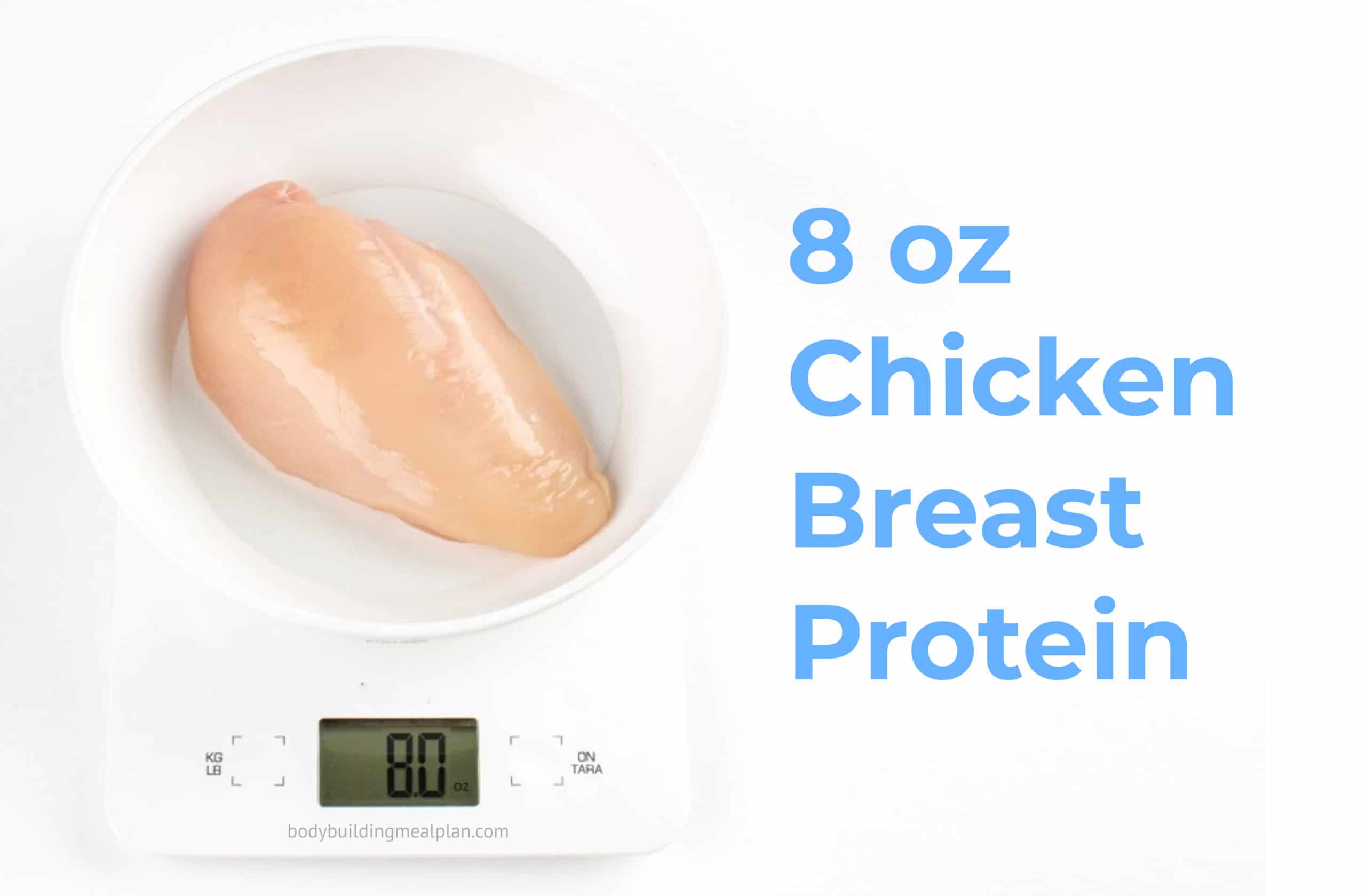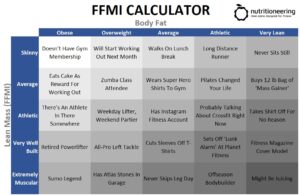Protein In 8 Oz Steak
Certified Nutrition Coach Breaks Down Macros In 5 Steak Cuts
By: Jeremy Fox, CNC, CPT – Published: April 20, 2022
If you’re counting macros, then you might be confused about how much protein is in an 8 oz steak. Some sources say as little as 30 grams. While others go as high as 70 grams.
So why all the variation? Well, the term “steak” refers to several different cuts of beef. And the actual amount of protein in a steak depends on the cut and a couple of other factors.
In this article, I help you determine how much protein is really in an 8 oz steak. So you can be sure you’re eating the right amount of protein and calories.

Cuts of Beef
Before we talk about protein, it helps to understand where steak comes from. Steak is a type of beef that butchers cut off different parts of a cow. The prized cuts come from the cow’s rib and loin regions, which are the most tender and flavorful meat.
Other parts provide tougher meat that you probably wouldn’t use for grilling steaks. Instead, most people slow cook or roast meat from the shoulder, flank, and rear-end.
With that out of the way, let’s get into how much protein is in steak.

Protein In 8 Oz Steak
On average, an 8 oz steak has around 50 grams of protein. However, it’s essential to realize that nutritional values differ depending on the cut of meat you buy.
One reason is that certain parts of the cow have more fat and less muscle per 8 ounces. In addition, some cuts come with the bone attached, displacing the amount of meat. Finally, the protein content differs if you weigh the steak before or after cooking.
Factors That Affect Protein In Steak:
Most Popular Steak Cuts
There are at least a dozen cuts of beef that you could potentially prepare as steak. However, the most popular cuts of steak are sirloin, T-bone, strip steak, filet mignon, and ribeye.
So it’s good to know how much protein is in each of these types of beef. In the infographic below, you can see the protein, fat, and calorie content of the popular cuts of steak.

Note: The data in this infographic and within this article is based on averages from the MyFitnessPal nutrition database. And the exact nutritional values of an individual steak may vary.
Now let’s take a more detailed look at the origin and nutritional profile of common cuts of steak.
Protein In Sirloin Steak
The sirloin steak is a lean cut of meat from the lower back region of the cow. And this cut is further divided from top to bottom based on size and consistency.
The top sirloin is smaller and more tender, so it’s the most prized. While the bottom sirloin is larger and less tender.
A typical 8 oz top sirloin steak has roughly 53 grams of protein, 27 grams of fat, and 455 calories. So it’s an excellent choice for a relatively lean source of protein.

Protein In T-Bone (Porterhouse) Steak
The T-bone and porterhouse steaks are cut from the short loin and contain a “T” shaped vertebra bone. These steaks have a piece of tenderloin on one side of the bone and a larger piece of strip steak on the other.
Generally, an 8 oz T-bone steak contains around 50 grams of protein, 34 grams of fat, and 506 calories—a prized cut for protein content and flavor.

Protein In Strip Steak (Striploin)
The strip steak is a tender cut of meat cut from the short loin of the cow. In the United States, it’s commonly sold as a New York Strip steak.
An 8 oz strip steak contains about 50 grams of protein, 35 grams of fat, and 515 calories.

Protein In Filet Mignon (Tenderloin)
The filet mignon is a round cut of steak taken from the smaller end of the tenderloin. In French, it means tender, delicate, or fine filet.
Often this cut is the most expensive on the menu due to its short supply on the cow. An 8 oz filet mignon steak has around 49 grams of protein, 44 grams of fat, and 574 calories.

Protein In Ribeye Steak
The ribeye is one of the fattiest cuts of steak that comes from the upper rib cage of the cow. And as a minimally used muscle, the ribeye makes for a tender steak.
With its characteristic marbling, an 8 oz ribeye steak has about 46 grams of protein, 44 grams of fat, and 580 calories. While this is a flavorful steak, be cautious of the high fat and calorie content.
Related: T-Bone vs Ribeye – Which Is Better?

After reading all those names and numbers, you might have a case of information overload. So below is a summarized version in an easy-to-read table.
As you can see, an 8 oz steak contains about 50 grams of protein on average. But certain cuts also contain a lot of fat.
So if your goal is increasing your protein intake, it’s best to opt for a leaner cut like sirloin. Or do your best to trim the fat and drain the excess.
However, if it’s flavor you’re after, you probably want to go with a tender cut like the ribeye or filet mignon.
Table 1. Protein In 8 Oz Steak By Cut
| Steak Cut | Protein | Fat | Calories |
|---|---|---|---|
| Sirloin | 53g | 27g | 455 |
| T-Bone | 50g | 34g | 506 |
| Strip Steak | 50g | 35g | 515 |
| Filet Mignon | 49g | 42g | 574 |
| Ribeye | 46g | 44g | 580 |
| Average | 50g | 36g | 524 |
Protein In 8 Oz Steak Bone-In
It’s important to realize that specific cuts of steak, like the T-bone or porterhouse, come with the bone-in. And the protein content laid out above does not include the bone.
So be sure to account for the weight of the bone when you purchase a steak. For example, if you buy a 16 oz T-bone at the store, it won’t yield two 8 oz servings of steak.
Protein In 8 Oz Steak Cooked
Another consideration is whether you weigh the steak before or after cooking. The nutritional values you’ve seen are for raw or uncooked steaks.
After you cook a steak, it loses roughly 25% of its weight. In other words, 8 oz of cooked steak started as about 10 oz of raw steak.
Therefore, 8 oz of cooked steak contains more protein than the same amount of raw steak. So a steak that weighs 8 oz after cooking contains 62-63 grams of protein.

Fat In 8 Oz Steak
On average, an 8 oz steak contains about 36 grams of fat. That may sound like a lot, but you can reduce the fat and calories without affecting protein content with these simple tricks.
First, some fat melts away and drips off during cooking, especially when grilling. But even if you pan-fry your steak, you can dump some of the grease at the end.
In addition, you can trim away the excess fat before cooking. Or cut around the large chunks of fat while eating, which is helpful if you order steak at a restaurant.
Also, buying grass-fed beef is a good way to get healthier fat because it’s higher in omega-3 fatty acids than grain-fed beef.
Custom Meal Plan
Get a personalized meal plan designed specifically for your body and lifestyle. Including custom recipes formulated to fit your macros and calories – no counting required!
All this for just $17.99/mo! Click here to choose your plan.
How To Measure 8 oz Steak
Of course, not all steaks weigh precisely 8 oz. So how do you measure an 8 oz serving of steak? I have a few different ways you can do it with or without a scale.
With No Scale
First, I always try to buy steak packages in half-pound (8 oz) increments. You can do this by looking at the label and making sure the weight ends in .00 or .50 (at least reasonably close).
Next, cook the whole steak and divide it into equal portions. For example, if you bought 2 lbs (32 oz), you would divide it into four equal portions after cooking (32/4=8).
Don’t worry about being perfect. For instance, if one portion is 7 oz and another is 9 oz, that’s okay! Over a few days, it all evens out.

With Scale
If math isn’t your thing, you can also measure steak the usual way with a kitchen scale. And you can do this before or after cooking.
First, you can weigh 8 oz of uncooked steak on your kitchen scale. You can also weigh multiples of 8 oz to divide up after cooking (16, 24, 32, etc.)
You can also weigh it after cooking if you don’t want to mess with raw meat. Remember that steak loses about 25% of its weight during cooking.
In practical terms, you should weigh 6 oz portions after cooking to get the same amount of protein as an 8 oz steak.
Protein Equivalents To 8 Oz Steak
While red meat is one of the best sources of protein, there are some downsides to eating it every day. For one, most cuts of steak are also high in fat and calories.
Table 2 below compares steak to other foods so you can see the most efficient sources of protein. Just for fun, I included tofu, one of the highest protein vegan foods, to show how inefficient it is compared to meat.
Table 2. Protein In 8 Oz Steak vs Other Foods
| Food | Serving | Protein | Fat | Calories |
|---|---|---|---|---|
| Steak | 8 oz | 50g | 36g | 524 |
| Chicken Breast | 8 oz | 52g | 3g | 240 |
| Lean Ground Turkey | 10 oz | 53g | 20g | 395 |
| Salmon | 12 oz | 51g | 27g | 465 |
| Tofu | 22 oz | 51g | 29g | 515 |
Related: 8 oz Ground Beef Protein & Calories
Protein In 8 Oz Chicken Breast
Now you know how much protein is in 8 oz of steak. But as you can see above, chicken breasts are easily the most efficient source of protein.
So if you’re on a bodybuilding meal plan, you should be eating chicken breasts regularly. However, like steak, the protein content of chicken depends on several factors.
To help you sort it out, I put together a complete guide to 8 oz chicken breast protein. Click below to see how much protein is in your chicken!
With this information, you’re well on your way to accurately counting your macros and calories. Now check out my other practical articles below!














